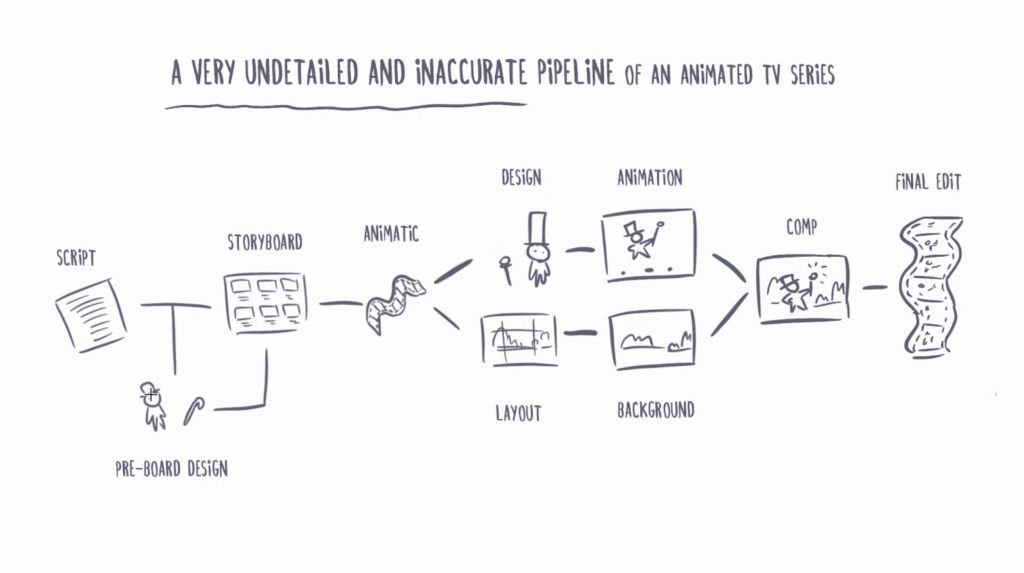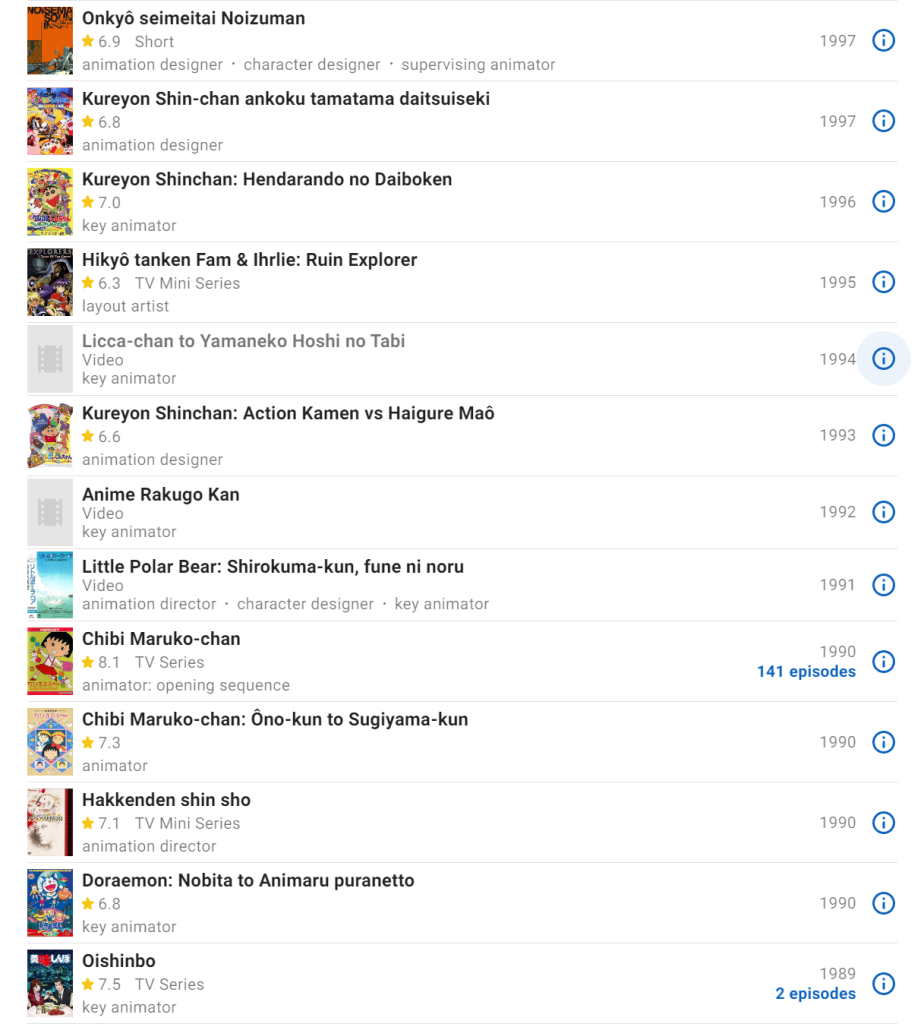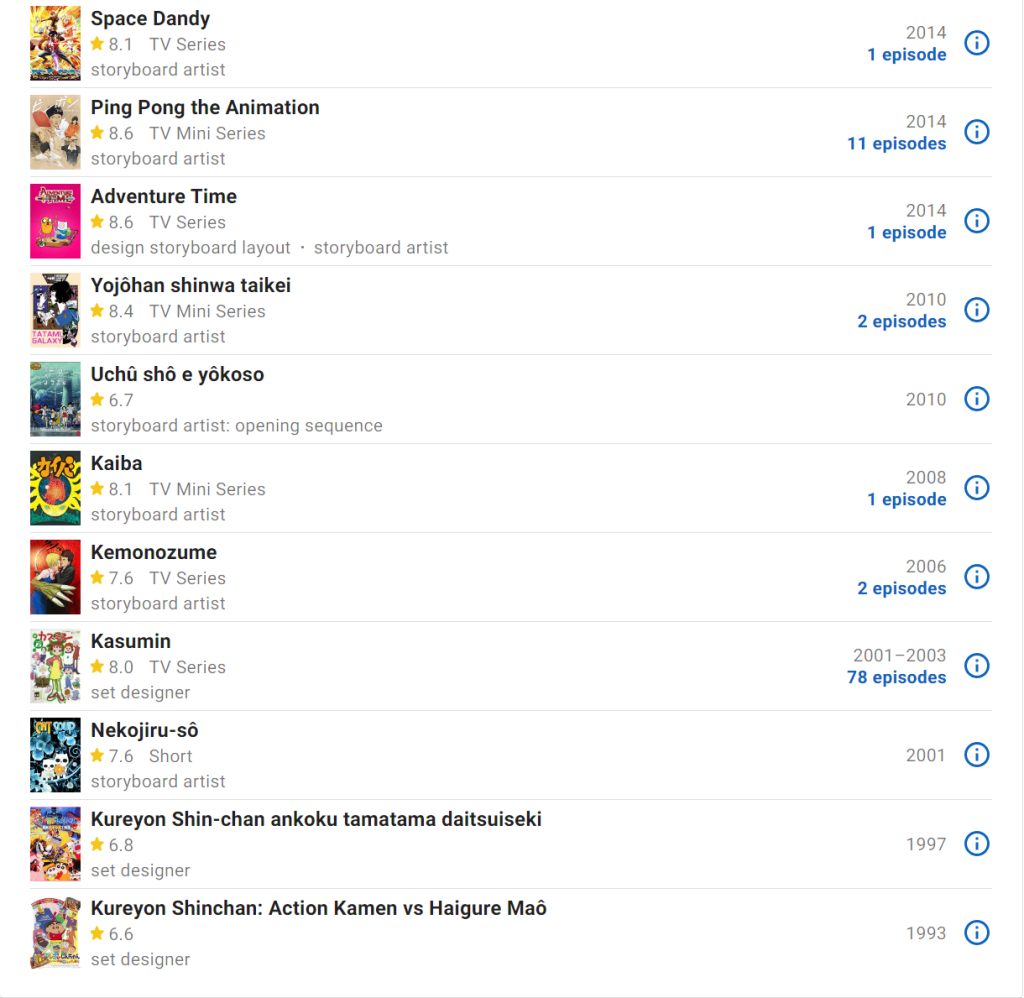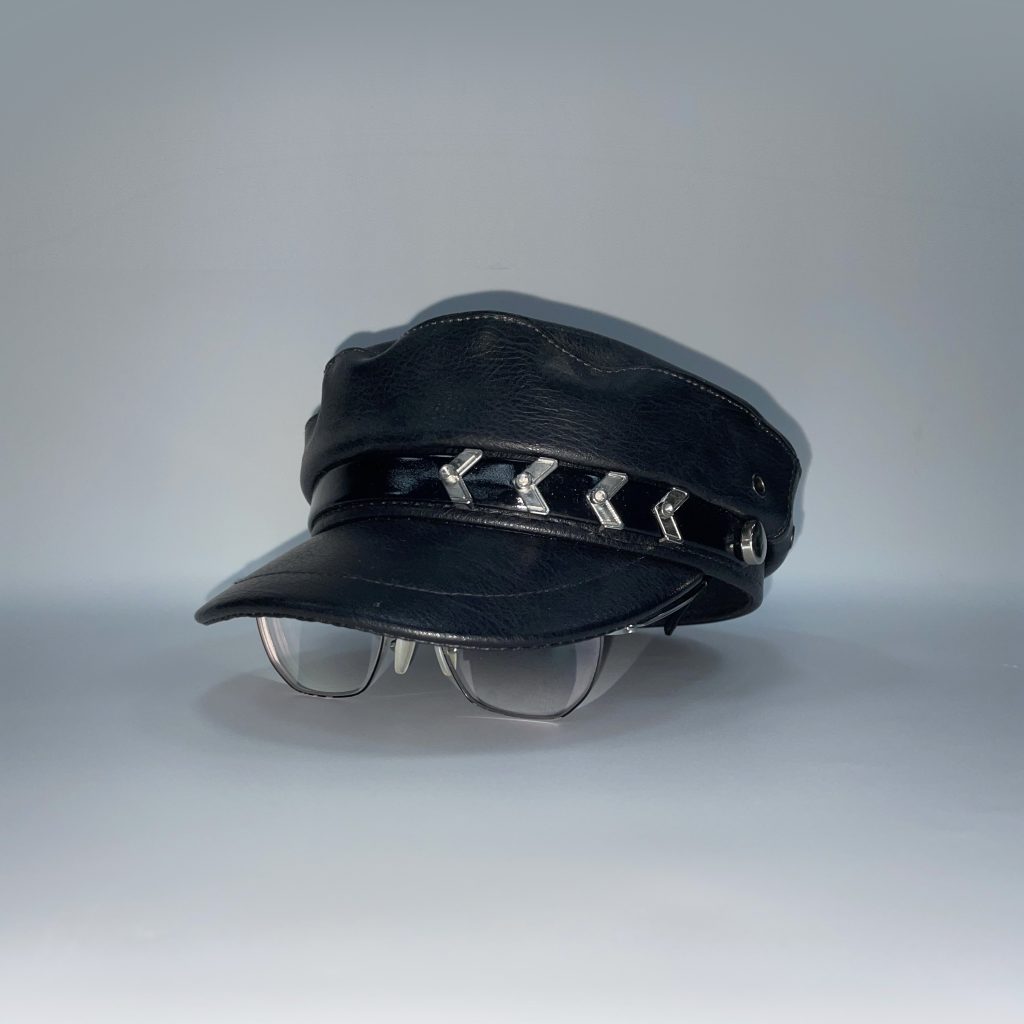After interviewing an animator who became a director directly when he entered the industry, I want to trace the career development of ordinary Asian animators to understand animation roles. It is generally known that the Japanese animation industry has a huge market and employment system. And China’s current commercial animation basically follows the Japanese model. (Although the system is not as complete as Japan’s. ) Every year, thousands of freshmen enter the industry. Most of them start from the most basic roles like clean-up, in-between and coloring artist. After some professional training, they can gradually be promoted to the positions with higher technical requirements or get access to management. At last, they either professionalize in their roles or seek other paths for development.
The figures below show the basic production process of traditional 2D animation. The first picture is from Bianca’s lecture, and the second picture is from the Kyoto Animation’s Drawing Guide (Kyoto Animation Co., Ltd., 2010). Normally, newcomers to the industry are used to fill the vacancies that require manual labor, such as mid-term animation production and background painting. Based on their practice and specialty, animators have the opportunity to get jobs such as key frame animator and supervising animator, or pre-production roles such as character designer, art designer, color designer and storyboard artist, etc., and even become a director.


Looking at Japanese director Masaaki Yuasa’s CV, we can see that he also started at the bottom of the animation department when he first entered the industry. In his early years, he worked as an animator for kid’s animation series such as Doraemon, Kureyon Shin-chan and Chibi Maruko-chan, and gradually became a supervising animator and assistant director. Soon after, he stepped into the art department, working as a set designer and storyboard artist. With his individual work Cat Soup (2001), he became an all-around animator in charge of story, design, and animation. Since then, his personal style stood out more obviously.


In 2013, Masaaki Yuasa was invited to the production of Adventure Time. He took this opportunity to establish the animation studio SCIENCE SARU. There he has directed several animated TV series and films.



However, staying in an animation company for many years and getting promoted step by step is not the only pathway for animators. Having a combination of skills allows for a diverse range of career options.
Mai Yoneyama is a freelance animator and illustrator from Japan. After graduation, she first joined Gainax and worked successively as an in-between artist, secondary key animator and key animator. Five years later, she left the company and became a freelancer for TRIGGER. During this period, she took on more design work such as visual development. Due to her outstanding personal style, she was assigned to the entire ending sequence of DARLING in the FRANXX (2018). In this project, she presented excellent art boards.


After 2016, her focus has tended towards illustration. She has made a name for herself in the field of commercial illustration, followed by a succession of art books and exhibitions. At the same time, she also provides designs for animation projects. The advertising animation films of hers carry on the beautiful illustration art, which are very popular among beauty and fashion brands.



Their career experiences inspire me that even though I start with primary roles, I shouldn’t give up training in visual art and design. As an animator who is more interested in pre-production process, I need to keep learning, improving and practicing to get prepared for it. Moreover, ability can give me more flexibility.
